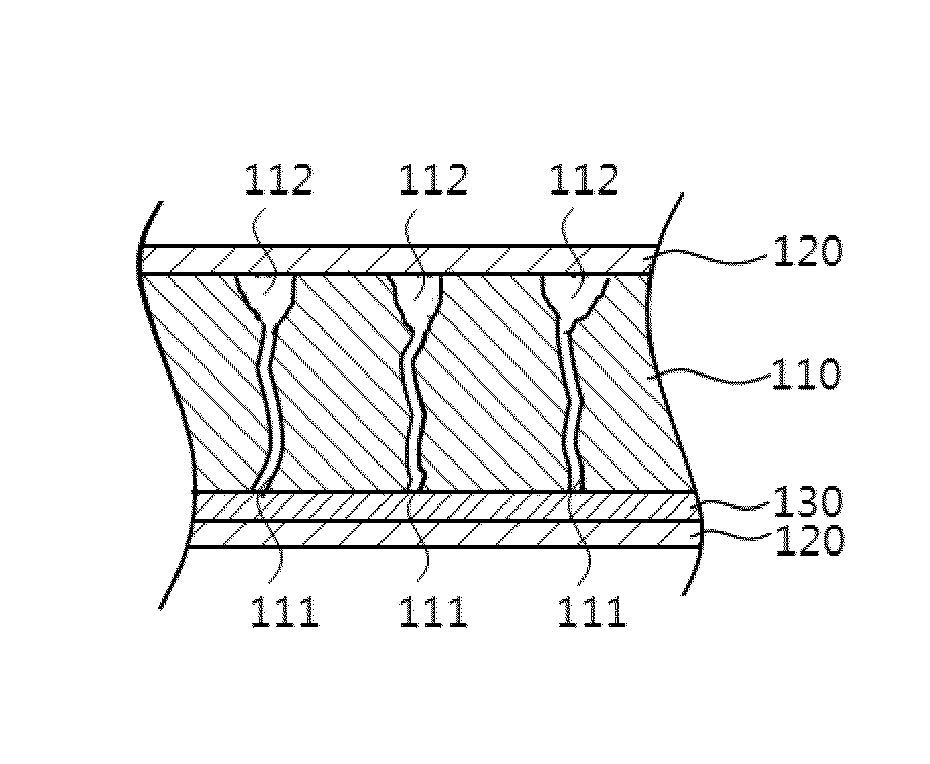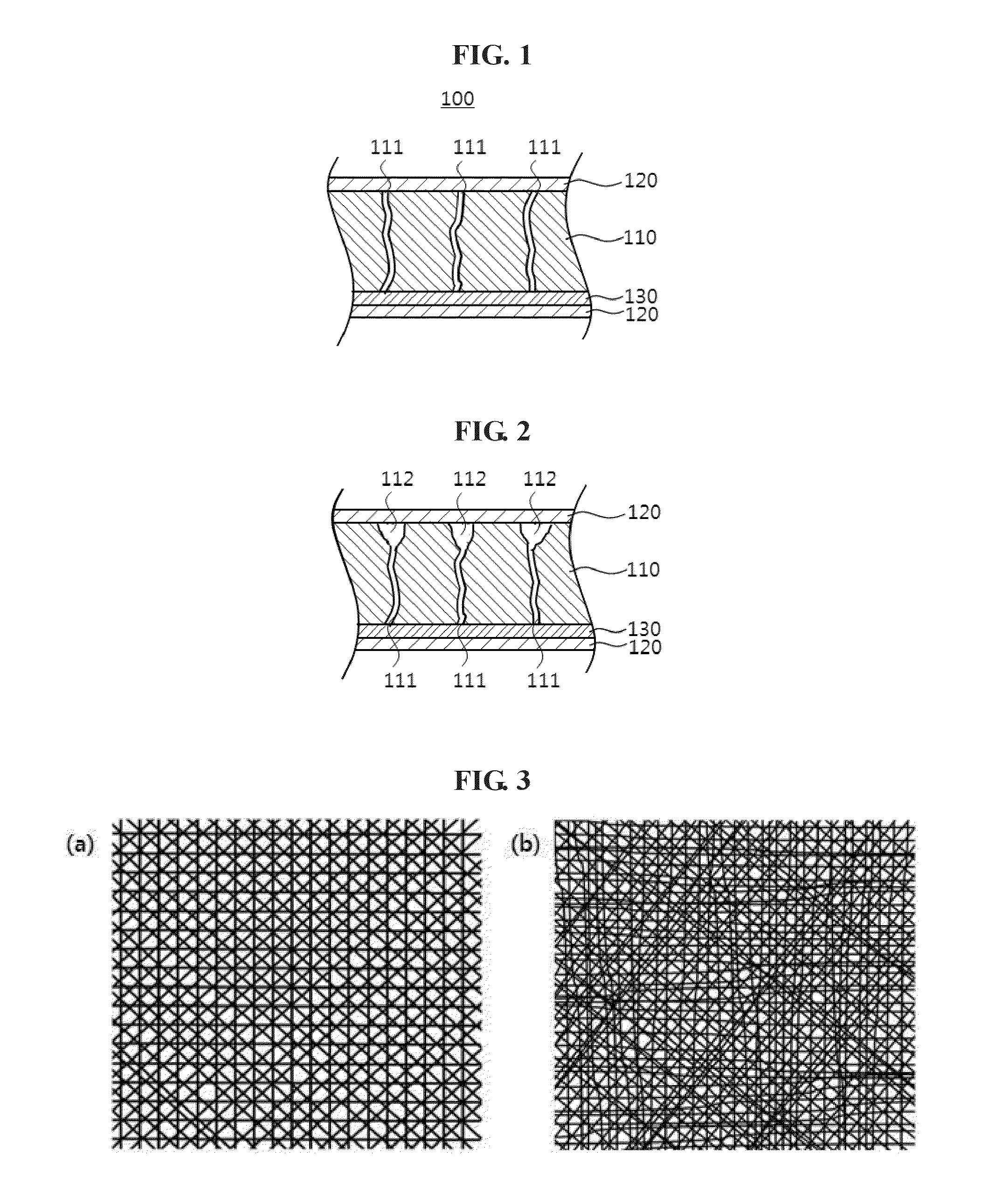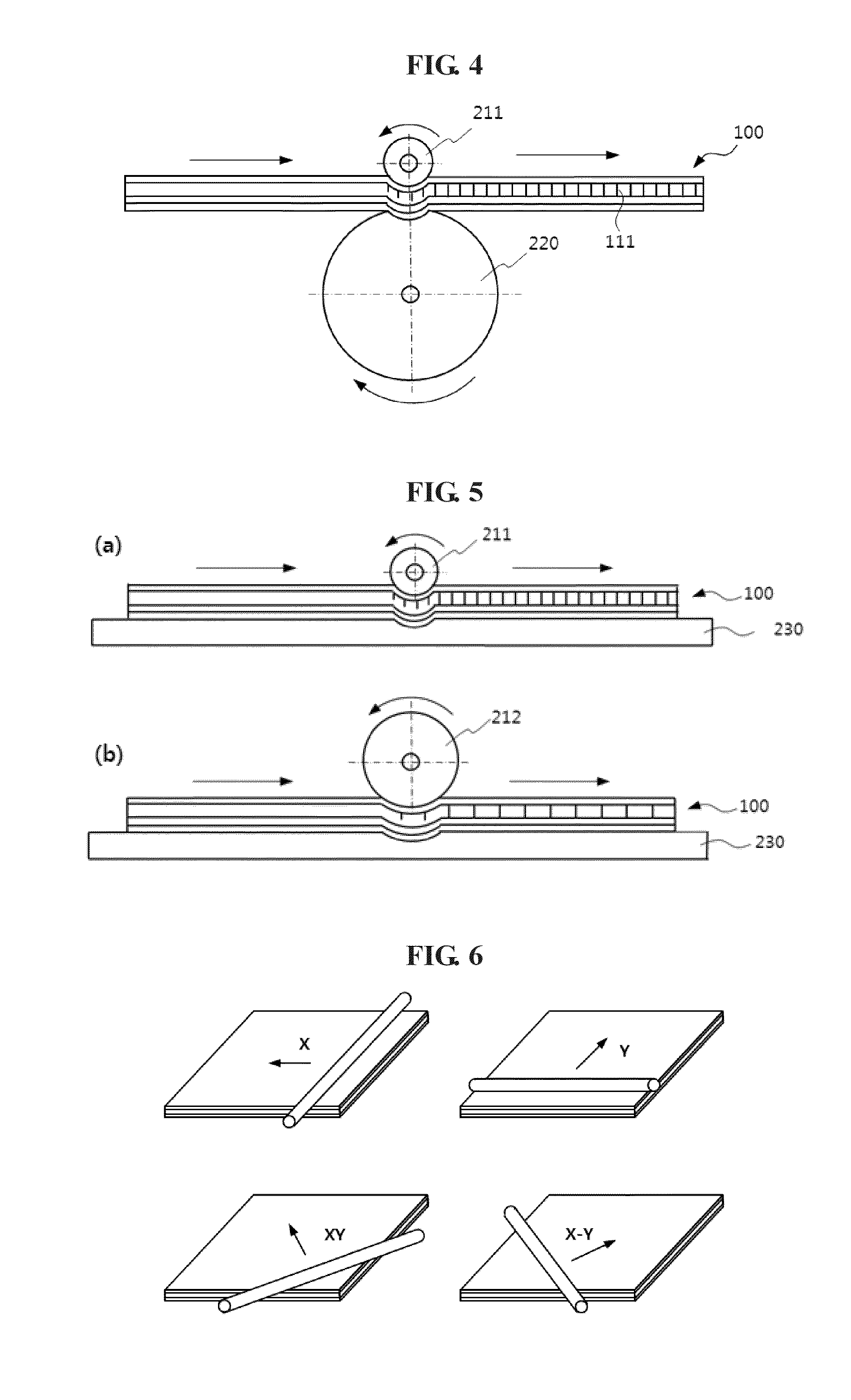Ceramic laminate sheet with flexibility and preparation method thereof
a technology of ceramic laminate sheet and flexibility, applied in the field of ceramic laminate sheet, can solve the problems of low flexibility of ceramic sintered body, easy breakage, and difficulty in applying ceramic sintered body to curved or flexible devices requiring flexibility, and achieve the effect of reducing process time and cost, excellent flexibility, and equal or more favorable ceramic material properties
- Summary
- Abstract
- Description
- Claims
- Application Information
AI Technical Summary
Benefits of technology
Problems solved by technology
Method used
Image
Examples
example 1
Preparation of Ceramic Laminate Sheet (without Groove, and Cracks in Two Directions)
[0081]Step 1) Preparation of Ferrite Green Sheet
[0082]Ni—Cu—Zn ferrite as ceramic powders and a composite binder, in which a binder, a plasticizer and a solvent were appropriately mixed, were mixed at a ratio of 60:40 by weight, and the resultant mixture was dispersed for 15 hours using a ball mill to thereby prepare slurry. A ferrite green sheet having a thickness of 0.1 mm was prepared through a tape casting method by using the slurry obtained.
[0083]Step 2) Preparation of Ferrite Sintered Body
[0084]To sinter the green sheet obtained, the temperature of the green sheet was increased up to 450° C. at a rate of from 0.5° C. / min and kept at this temperature for 5 hours to burn. Afterwards, the temperature was increased again up to 950° C. at a rate of 3° C. / min to perform a sintering reaction of ferrite powders. The sintered ferrite sheet had a thickness of 0.08 mm.
[0085]Step 3) Roll Lamination Process...
experimental example 1
Evaluation of Characteristics of Ceramic Laminate Sheet According to Presence or Absence of Grooves
[0091]Measurement results of permeability and permeability loss of the ceramic laminate sheets prepared in Example 1 and Comparative Example 1 are shown in Table 1 below.
TABLE 1Density ofCeramicceramic piecesPermeability / laminate sheetGroove formation(number / cm2)Permeability lossExample 1Groove not formed54.8140.2 / 2.1ComparativeGroove formed55.2139.4 / 2.1Example 1
[0092]As shown in Table 1, although cracks were formed after sintering without the formation of lattice grooves in a green sheet, the ceramic laminate sheet of Example 1 exhibited a permeability equal or superior to the ceramic laminate sheet of Comparative Example 1 with lattice grooves formed. That is, it can be understood that the ceramic sheet without the groove has more excellent characteristics (physical properties) in the case where the ceramic sheet was divided into substantially the same number of pieces.
[0093]Therefor...
examples 2 to 9
Preparation of Ceramic Laminate Sheet (without Groove, and Cracks in Four Directions)
[0094]The ceramic laminate sheet was prepared in the same manner as in Example 1, but the flexion deformation of step 4) was further performed in the diagonal direction XY and another diagonal direction X-Y perpendicular thereto. The space between cracks and the density of ferrite pieces provided accordingly were adjusted by changing the diameter of the pressure roller, the space between the rubber plate and the roller, or the pressure, which were used in step 3) of roll lamination and step 4) of flexion deformation.
PUM
| Property | Measurement | Unit |
|---|---|---|
| angle | aaaaa | aaaaa |
| thickness | aaaaa | aaaaa |
| thickness | aaaaa | aaaaa |
Abstract
Description
Claims
Application Information
 Login to View More
Login to View More - R&D
- Intellectual Property
- Life Sciences
- Materials
- Tech Scout
- Unparalleled Data Quality
- Higher Quality Content
- 60% Fewer Hallucinations
Browse by: Latest US Patents, China's latest patents, Technical Efficacy Thesaurus, Application Domain, Technology Topic, Popular Technical Reports.
© 2025 PatSnap. All rights reserved.Legal|Privacy policy|Modern Slavery Act Transparency Statement|Sitemap|About US| Contact US: help@patsnap.com



